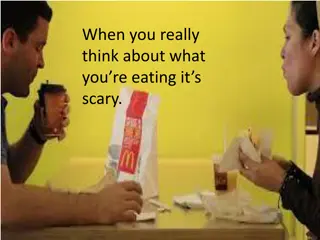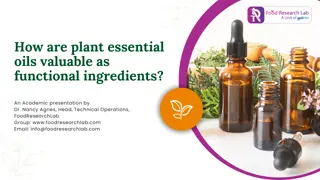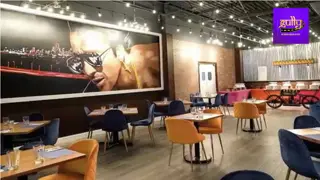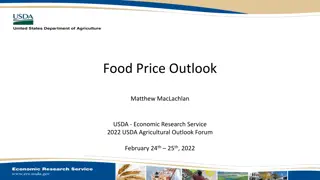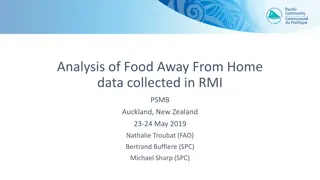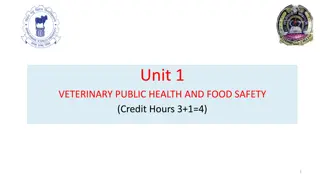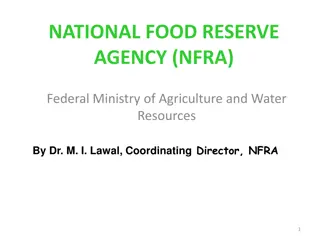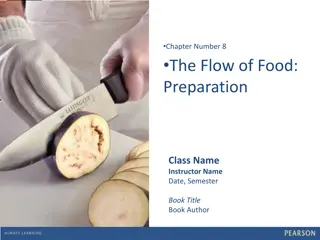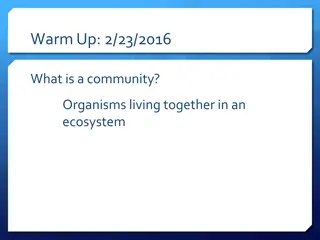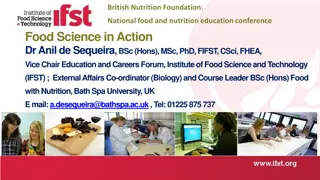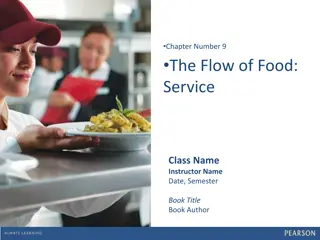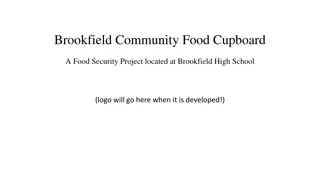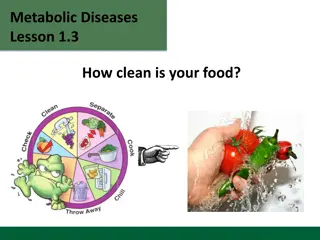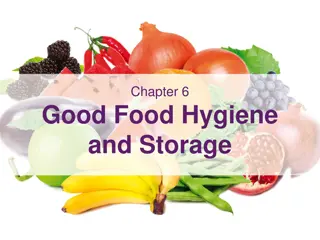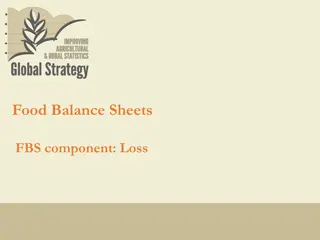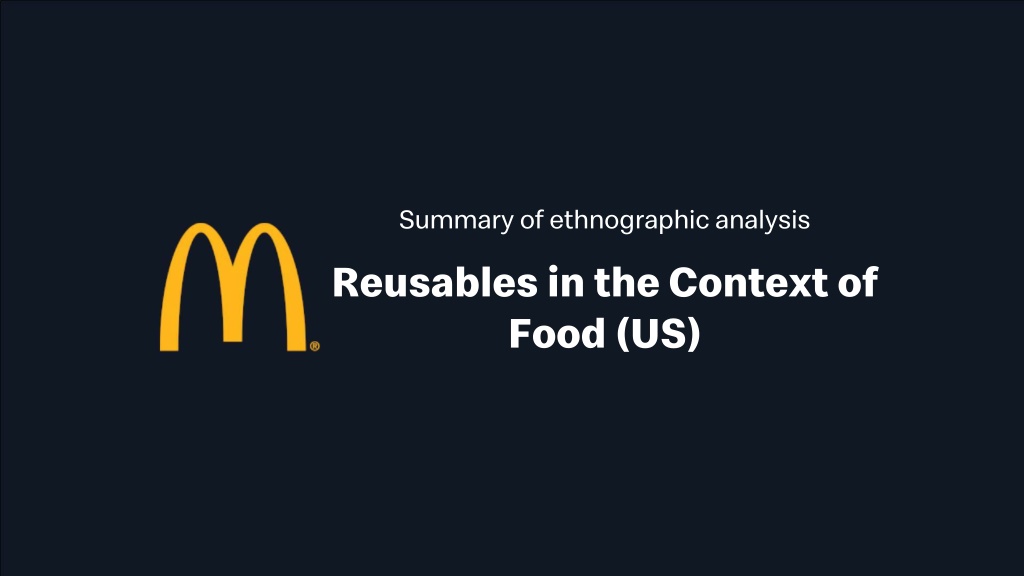
Ethnographic Analysis of Reusables in Food Context
Explore the consumer motivations and demographics behind the emerging culture of reusables in the food context in the US. Discover the meaning layers - from visible macroculture to implicit core beliefs - shaping consumer behavior.
Download Presentation

Please find below an Image/Link to download the presentation.
The content on the website is provided AS IS for your information and personal use only. It may not be sold, licensed, or shared on other websites without obtaining consent from the author. Download presentation by click this link. If you encounter any issues during the download, it is possible that the publisher has removed the file from their server.
E N D
Presentation Transcript
Summary of ethnographic analysis Reusables in the Context of Food (US)
SOCIAL MEDIA ANALYTICS Direct conversations about a topic SOCIAL MEDIA ANALYTICS Direct conversations about a topic METHODOLOGY Using machine intelligence + PhD Anthropologists, we conduct an observational study of consumer language to decode beliefs. SCALE Our engine scrapes data from (and studies) more than 20M consumers between the ages of 18-74 each monthNOTE: For global analysis, check our support portal for any limitations in data and representation. 2 ANTHROPOLOGY Direct and Indirect contextual conversations about a topic BY ANALYZING THE ASSOCIATIONS OF THE ASSOCIATIONS WE DISCOVER THE FORCES OF CHANGE REPRESENTATION It's 2022! We have no problem finding a representative sample of consumers between the ages of 18-74 in the western world. However, nothing is perfect. We do allow for approx 4% margin of error in demographic reporting.
Reusables & Food How relevant is this space? Relevant to 35.6M people and growing by 23.0% over the next 5+ years. 3 This culture has not reached its tipping point yet. This means consumers have only recently developed a clear sense of what they want in this space but there is still room for change.
Who is the consumer behind this culture? Motivations & Demographics Motivation These consumers want to create a new moral standard for consumption. Their decisions about what to consume are guided by how they will have an impact on the environment and society. By consuming the right products they can directly help promote social justice, (transnational) equality, environmental sustainability, and animal well-being. This is their new moral standard, and they judge others based on it. 71% of the audience falls into the following Family Type categories: single, couples without children 4 45% of the audience falls into the following Age Bracket categories: 18-20, 35-44, 45-54 72% of the audience falls into the following Social Class categories: middle class, upper middle class
Set up: Iceberg model of meaning This is our context. It's the part of the iceberg that s visible to us all. Consumers in your marketplace will have no trouble talking about this macroculture when asked questions about it. But their responses will tend to be logical and framed. MACROCULTURE implicit meaning line This is the most dangerous or valuable part of the culture where core beliefs are held. These core beliefs are hidden from plain sight and drive the consumer's decisions. People will often have a very difficult time articulating these beliefs and that is where observational research is key. CORE BELIEFS This is the least dangerous part of the culture. That is, these manifestations are current ways in which the consumer's beliefs manifest out in the market. This is also the part of the culture that changes the most because manifestations are behaviors that change and evolve quite often as new technologies and solutions are launched. CURRENT MANIFESTATIONS
These are the core beliefs that define the consumer in the context of Reusables & Food 1. Repurposing Pack Waste Reusables & Food = cuttingback on plastic waste withofuotr reusable containers that down on household waste bryisking foodborne illness. can safely store food and finding alternative uses for food packaging. ng3. Avoiding Contami Reusables & Food = cuttingReusables & Food = opting ion5. Saving Leftovers extend its shelf life. 6 NEW IDEAS EARLY CONSENSUS 2. Reusable-On-the- Reusables & Food = having Reusables & Food = convenient reusable alternatives on hand when sustainably-produced dining out to cut back on waste. 4. Quality & Durability prioritizing durable, packaging to avoid polluting landfills and depleting natural resources.
1. Repurposing Packaging Waste Core Belief Core Belief Reusables & Food = cutting down on household waste by finding alternative uses for food packaging. Current manifestations of this belief Consumers feel they can help limit the amount of waste that is sent to the landfill by repurposing otherwise disposable items. They're also reading they can get creative with plastic food packaging and get a head start on next year's garden. Consumers are looking for ways to repurpose durable glass jars and bottles instead of tossing them in the recycling. 7 Consumers wonder if they can reuse biodegradable plastic as compost for their garden.
2. Reusable-On-the-Go Core Belief Core Belief Reusables & Food = having convenient reusable alternatives on hand when dining out to cut back on waste. Current manifestations of this belief While they're excited to learn that a handful of fast food restaurants are introducing reusable containers, they know that this has yet to become common practice among QSRs. They discuss stashing reusable cutlery and straws in the bottom or their purse or backpack so they can minimize plastic waste when grabbing food or drink on the go. Some consumers feel that restaurants should meet them halfway and offer perks to customers who bring their own reusable food and/or drink containers. 8
3. Avoiding Contamination Core Belief Core Belief Reusables & Food = cutting back on plastic waste without risking foodborne illness. Current manifestations of this belief Consumers want to see more restaurants reduce waste from single-use packaging, but they worry that plastic reusable containers may not be disinfected properly. They're looking for ways to sanitize their old plastic food storage containers without having to resort to using harsh chemicals, which they view as potentially harmful to their health. Consumers discuss biodegradable plastic as better for the environment compared to virgin plastic, but they're unsure of whether it's safe to use more than once. 9 Consumers are tempted to reuse disposable Ziploc bags to store food at home but they're concerned about bacteria growth with repeated use.
4. Reusables in QSR Delivery Core Belief Core Belief Reusables & Fast Food = seeking creative solutions to reduce guilt and responsibility for household waste from food delivery. Current manifestations of this belief Consumers wonder how reusable focused delivery could cut down on packaging waste. While consumers want to see reusables widely adopted in QSR deliveries, they worry that resealable packaging isn't as effective at preventing spills. Consumers are trying to save money and waste by ordering larger drinks to share when getting fast food delivered. 10 They like the idea of getting extra value from QSR delivery when orders come packaged in something they can use in their daily life.
5. Quality & Durability Core Belief Core Belief Reusables & Food = prioritizing durable, sustainably-produced packaging to avoid polluting landfills and depleting natural resources. Current manifestations of this belief Consumers worry that reusable products made from durable natural materials are more resource-intensive than their synthetic counterparts. Consumers look for durable alternatives to glass on-the-go containers, which they worry may break after one too many spills out of their backpack. They're also worried that flimsy, plastic reusable food containers at fast food restaurants won't be able to withstand the wear and tear of daily use by careless customers. 11
6. Saving Leftovers Core Belief Core Belief Reusables & Food = opting for reusable containers that can safely store food and extend its shelf life. Current manifestations of this belief Consumers discuss swapping plastic wrap for reusable beeswax wraps to store leftover food, but they worry that things won't stay fresh for long. Consumers are looking for ways to freeze their leftovers in reusable packaging without having to worry about freezer burn. They want to keep leftovers in their original takeout containers, but they worry these containers aren't suitable for long-term storage. 12
7. Ingesting Microplastics Core Belief Core Belief Reusables & Fast Food = preventing illness with reusable cups and containers that won't shed toxic materials and microplastics into food. Current manifestations of this belief Consumers are researching the materials in fast food packaging that could be harmful, so they can find the right reusable. They are worried about microplastics from coffee cups to microwaved takeout containers shedding into their food when heated. They fret about disposable plastic utensils, because every bite comes with microplastics and dangerous chemicals like phthalates and heavy metals. 13 Consumers want sturdy reusable takeout containers that prevent microplastics or chemical leaching into their food.
8. Finding Eco-Friendly Disposables Core Belief Core Belief Reusables & Food = finding a balance between functionality and sustainable disposable materials. Current manifestations of this belief Consumers worry they will have to choose between containers that can be recycled or composted easily and those that can actually prevent soup, sauces, or drinks from leaking and making a mess. Because consumers worry that their local infrastructure can't recycle or compost new sustainable materials, they look for post-consumers recycled materials as a middle ground. They share articles about innovative edible packaging, but they worry such packaging would need a non-sustainable, outer package. 14 Consumers are looking for guidance when it comes to disposing of each piece of garbage correctly so they can support sustainable waste management practices.
9. Eliminating Small Packets Core Belief Core Belief Reusables & Fast Food = saving the planet, one refusal of small packaged items in QSR orders at a time. Current manifestations of this belief They are concerned about the amount of waste from packaged condiments, and they chat about bringing their own to reduce waste. Consumers are trying to carry a reusable straw with them whenever possible, so they can refuse single-use plastics at QSRs. Consumers are taking handkerchiefs on the go, so they don't need napkins with their QSR orders. 15 They are curious if QSRs will offer reusable small containers, so they do not need to rely on disposable plastic or wax-covered vessels.
Your action plan It's time for some homework Mid term opportunities Short term opportunities Reusables & Food = cutting back on plastic waste without risking foodborne illness. Reusables & Food = finding a balance between functionality and sustainable disposable materials. Reusables & Fast Food = saving the planet, one refusal of small packaged items in QSR orders at a time. - Reusables & Food = cutting Food = having down on household waste by finding alternative uses for food packaging. Reusables & Reusables & Food = opting for reusable Reusables & Fast Food = preventing illness with reusable cups and containers that won't shed toxic materials and microplastics into food. Reusables & Fast Food = seeking creative solutions to reduce guilt and responsibility for household waste from food delivery. Reusables & Food = prioritizing durable, sustainably-produced containers packaging to avoid polluting landfills and safely store depleting natural resources. convenient reusable alternatives on hand when dining out to cut back on waste. Core beliefs DNA that can food and extend its shelf life. Current manifestations of core belief Product DNA (In what ways is your product delivering against these beliefs?) - - - - - - - - Brand DNA (In what ways is your brand delivering against these beliefs?) - - - - - - - - -
Future manifestations of core belief Product DNA (In what ways could your product deliver against these beliefs?) - - - - - - - - - Brand DNA (In what ways could your brand deliver against these beliefs?) - - - - - - - - -




